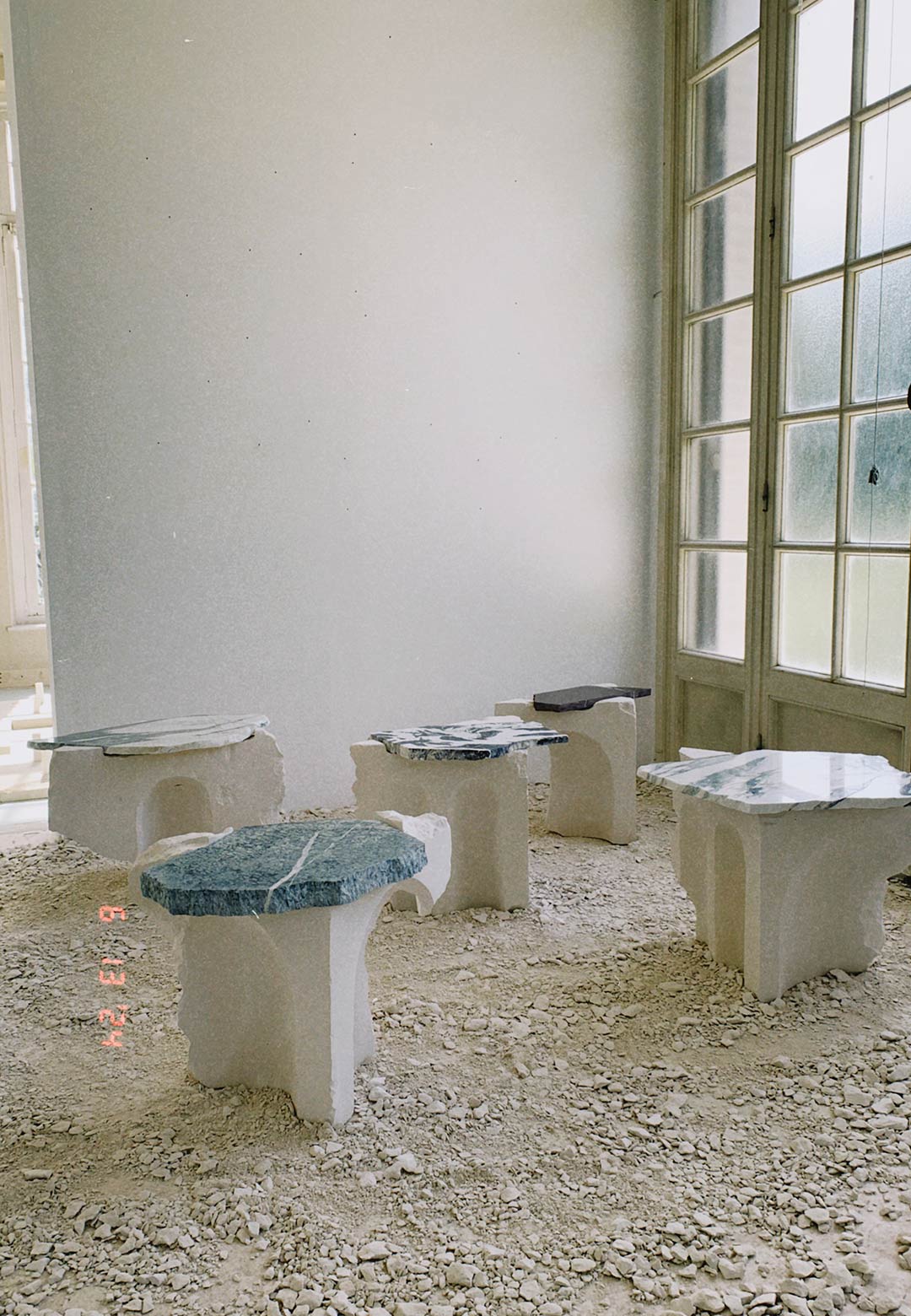For artist-sculptor Audrey Guimard, the choice to use stone as a primary material for her sculptural designs was almost instinctive. As she mentions in an interview, having grown up in the mountains cultivated a deep fascination for the material, leading to a degree in archaeology. With a background in art history and archaeology, Guimard has previously worked as a scenographer and interior architect. She first realised the potential of discarded stone fragments during an art residency in disused quarries. Speaking about her studio's work that produces statuesque artefacts toeing the line between ornamentation and function—apart from her scenography commissions—the French artist notes, "I tell a completely different story with my choice of stone and how I source and work with it. I love the notion of the artefact; it evokes a sense of timelessness, troubling materiality and functionality. Something has been made, the material has transformed."
Her recent collection, Fragments, is an ongoing exploration of this tension between materiality and function through the use of offcut tufa stone. "As with every new project, the inspiration comes from the stone blocks I have at my disposal…My eternal references are always tied to ruins and vanished civilisations, which led to forms of broken column capitals quickly emerging for this series," the sculptor tells STIR, on her creative references and sculptural approach to product design. For Fragments, the designer used five stone blocks of the same size that had developed cracks, leading to each of the pieces being arranged in certain configurations. Every artefact in the collection, which includes table designs, totems and pedestals of various sizes, plays on the natural 'deformation' of the stone, rendering each unique.
The base of most pieces, for instance, have carved ridges on them, making them appear as if taken from Greek columns. Guimard has previously noted that her approach to design could be likened to a "treasure hunt", where the sculptures and furniture designs are born from the materials she discovers. The key notion is to use stone that has not been specifically extracted, instead, working with what is available. It is worth noting here that each piece is individually crafted by Guimard by hand.
Elaborating on her individualistic approach to creating, the product designer notes, "I often compare this to the way I cook: I'm incapable of planning a menu in advance. I find inspiration when I go to the market and see the beauty of the products…It's this notion of play and challenge with unique elements that creates the dynamic of my creative process." The approach to design and sculptural art in her practice with an emphasis on the reuse and repurposing of materials presents a radical way of thinking about and crafting products and furniture. Where contemporary architecture is now rife with instances of regeneration and refurbishment of existing buildings, sustainability within the product design discourse tends to focus more heavily on objects being able to be recycled (meaning that the individual components of an object go back into production for the same or similar objects) or on biodegradable materials. Using waste and material that might eventually be disposed of for new works presents a novel way to consider circular design.
"We no longer need more objects, furniture or clothing," Guimard states. "This harsh yet real observation should ultimately serve as a strength and a source of renewal for conscious and responsible creation. We absolutely must reassess our needs, whether as clients, designers, architects or artisans and further activate hybrid practices, merging skills and materials, while also pushing research on our 'leftovers'," she continues. Apart from sculptures, Guimard's practice also encompasses installations and scenography for different brands. Here too, Guimard attempts to experiment with stone offcuts and artefacts for her visualisation.
To illustrate, her latest project was an installation of monumental pieces for the new Sessun flagship store in Paris, which combined different stones and sculptural techniques. "I am fortunate to work on beautiful projects, both artistically and humanly. For instance, I am developing 'living sculptures' for Studio Mo-Mo, which connects artists, designers, architects and artisans in Drôme. Here, I have the pleasure of merging stone with basketry (by Alexandra Ferdinande)," she mentions, about her upcoming commissions. Merging a keen sense for novelty and craftsmanship, Guimard's Fragments not only pay homage to the solid materiality of stone but presents new ways of thinking about the material.






 Sign in with email
Sign in with email










What do you think?